Iran
Discover Iran
Iran, also known as Persia, is a culturally rich and diverse country located in Western Asia. It is home to one of the world’s oldest civilizations, with a history dating back thousands of years. The country is known for its stunning architecture, vibrant bazaars, and hospitable people.

With a population of over 80 million, Iran is one of the most populous countries in the Middle East, and Tehran serves as its bustling capital city. The official language is Persian, and the currency used is the
Iranian rial. Iran has made significant contributions to literature, art, and science throughout history, and its influence can be seen in various aspects of global culture.
The flag of Iran
The flag of Iran, also known as the Three-Colored Flag, is a tricolor flag featuring three horizontal bands of green, white, and red. The green band represents growth, happiness, unity, nature, and the Persian language. The white band symbolizes freedom, peace, and light, while the red band represents bravery, martyrdom, and the bloodshed of those who fought for Iran. In the center of the white band, there is the stylized representation of Allah in the shape of an Arabic word. The design of the flag is deeply rooted in the country’s history and is steeped in cultural significance.

The flag’s green color is often associated with spring and renewal, as well as the Islamic faith.
White is a symbol of peace and harmony, reflecting the nation’s aspirations for tranquility and coexistence.
Red signifies the courage and resilience of the Iranian people throughout history, with a nod to the sacrifices made for the country’s independence.
Map of Iran
The geographic location of Iran places it in the Middle East, bordering the Gulf of Oman, the Persian Gulf, and the Caspian Sea. To the north, it shares its borders with Armenia, Azerbaijan, and Turkmenistan, while to the east, it is adjacent to Afghanistan and Pakistan. The western borders touch Turkey and Iraq.
The map of Iran showcases its diverse topography, including mountain ranges, deserts, forests, and fertile plains. The vast and varied landscape contributes to the rich culture and history of the country, making it an intriguing destination for travelers and explorers.

The map also highlights the major cities, such as Tehran, Isfahan, Shiraz, and Tabriz, each offering
unique experiences and attractions. The intricate network of roads and highways connecting these cities reflects the accessibility and infrastructure of the country. Additionally, the map illustrates the location of significant historical sites, natural landmarks, and architectural wonders, providing insight into the country’s heritage and beauty.
Exploring the map of Iran not only reveals its physical features but also offers a glimpse into its diverse cultural tapestry, inviting visitors to embark on an immersive journey through a land adorned with ancient treasures, vibrant traditions, and breathtaking scenery.
For an interactive and detailed map of Iran, you can visit this link.
Currency of Iran
Iranian Rial
The official currency of Iran is the Iranian Rial. It is abbreviated as IRR and is commonly represented by the symbol “﷼”. The Rial is further subdivided into 100 dinars. While the Rial is the official currency, due to inflation and the use of other currencies, transactions are often conducted in toman instead of rials.
One toman is equivalent to 10 rials.
Historical Significance
The Iranian Rial carries a historical significance, with its roots dating back to the early 16th century. Over the years, the currency has gone through several changes to adapt to economic developments and political transitions in Iran. Understanding the historical context of the Iranian Rial can provide valuable insights into the country’s economic and political evolution.
Foreign Exchange
Foreign exchange plays a crucial role in Iran’s economy, with the Iranian Rial being affected by geopolitical events and international trade relationships. The fluctuation of the Rial in the foreign exchange market has a direct impact on Iran’s import and export sectors, as well as its overall economic stability.
Challenges and Innovations
Iran’s currency has faced numerous challenges, including inflation and international sanctions. The country has also introduced innovative approaches to manage its currency, such as the implementation of new financial policies and the development of digital payment systems to address economic complexities.
Economy of Iran
Gross Domestic Product (GDP): Iran has a diverse economy with a significant reliance on oil and natural gas. As one of the largest economies in the Middle East, its GDP ranks among the top 20 globally.
Industry and Manufacturing: The industrial sector in Iran includes petrochemicals, steel, copper, and automobile production. Manufacturing plays a vital role in the Iranian economy, contributing to employment and export revenue.
Trade and Exports: Iran’s exports primarily consist of petroleum, chemical products, and fruits. Despite international sanctions, the country has managed to maintain trade relations with various nations.
Challenges and Opportunities: The Iranian economy faces challenges related to inflation, unemployment, and economic sanctions. However, it also holds potential for growth through diversification and foreign investment.
Culture of Iran
Festivals and Celebrations
Iranian culture is rich with vibrant festivals and celebrations that reflect its history, traditions, and religious influences. One of the most iconic celebrations is Nowruz, the Persian New Year, marking the arrival of spring. During Nowruz, families gather to set up a “Haft-Seen” table, adorned with seven symbolic items, and engage in various customs and rituals to welcome the new year.

Art and Handicrafts
Iran is renowned for its exquisite art and handicrafts, ranging from intricate Persian carpets and textiles to beautifully painted ceramics and exquisite miniature paintings. Artisans often use ancient techniques and motifs, preserving the country’s artistic heritage while also incorporating modern influences.
Hospitality and Cuisine
Iranian culture is synonymous with warm hospitality and a rich culinary tradition. The elaborate and diverse Iranian cuisine includes aromatic rice dishes, succulent kebabs, and an array of flavorful stews. Sharing meals and gatherings with friends and family is a cornerstone of Iranian social life.
Traditional Dances in Iran
Persian Dance
The Persian dance, also known as “Ballet Afsaneh”, is a beautiful and elegant form of traditional Iranian dance. It originated in the courts of ancient Persia and is characterized by its graceful movements, intricate footwork, and expressive storytelling. Each performance is a mesmerizing display of cultural heritage, with dancers adorned in vibrant costumes and accompanied by traditional Persian music.

Bandari Dance
Hailing from the southern regions of Iran, the Bandari dance is a lively and energetic form of folk dance. It reflects the vibrant and cheerful spirit of the coastal communities and is often performed during celebrations and social gatherings. Dancers move to the rhythms of traditional Bandari music, creating a joyous and festive atmosphere that captivates audiences.
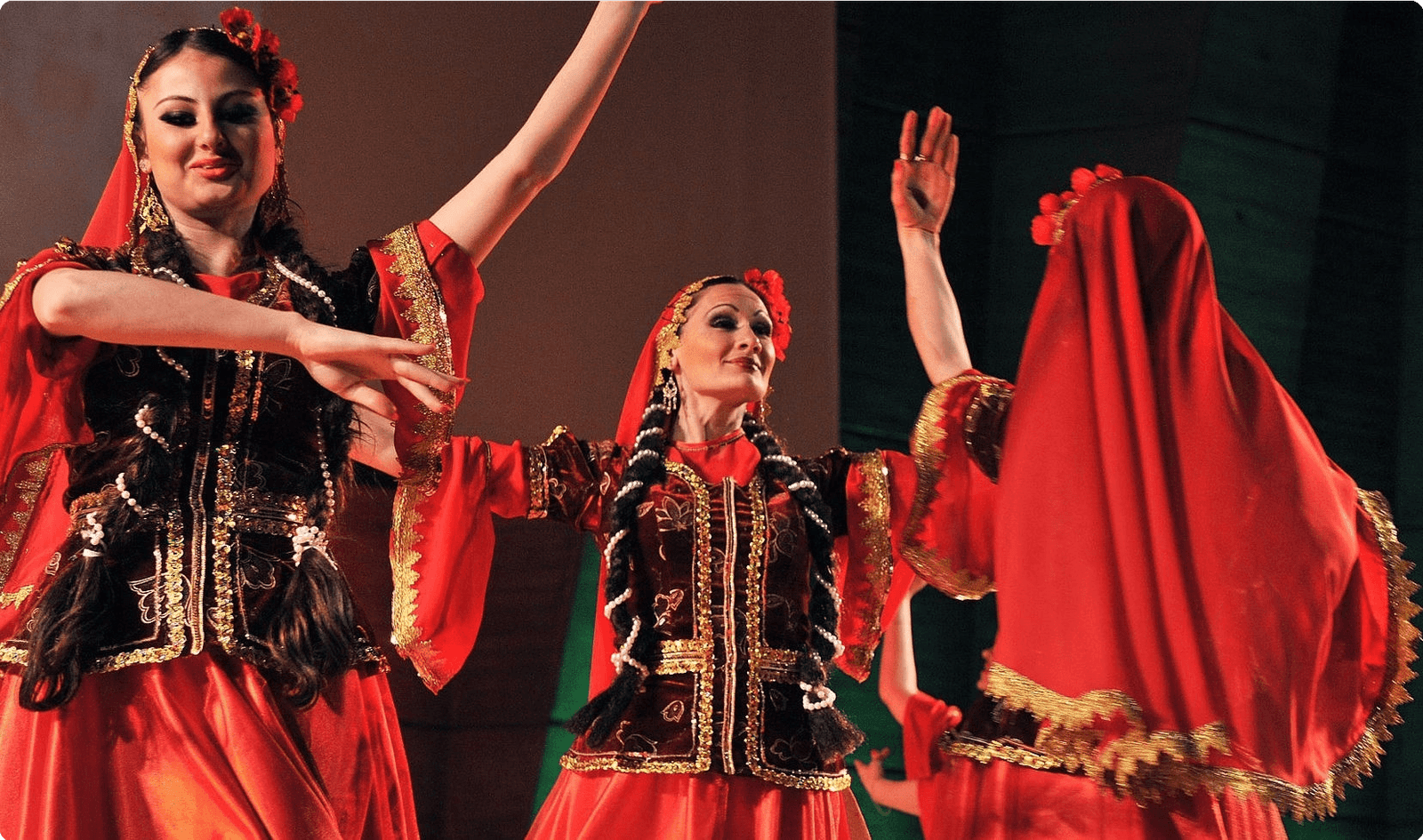
Lori Dance
The Lori dance, prevalent in the western regions of Iran, is a powerful and expressive form of traditional dance. Characterized by strong, rhythmic movements and vibrant costumes, this dance embodies the rich cultural heritage of the Lori people. Each performance is a celebration of the region’s history and traditions, conveying stories of resilience and community through captivating movements and music.

Famous Iranian Dishes
Iranian Kebab
Iranian kebab, known as “kebab koobideh,” is a popular dish made of minced meat (often lamb or beef) mixed with spices and grated onions, then grilled on skewers. It is usually served with rice, grilled tomatoes, and fresh herbs, creating a flavorful and aromatic dish that is loved by locals and visitors alike.

Tahchin
Tahchin is a delectable Persian rice cake made with layers of saffron-infused basmati rice, tender marinated chicken or lamb, and yogurt. The dish is then baked to perfection, creating a crispy golden crust. It’s a delightful blend of savory flavors and fragrant spices.
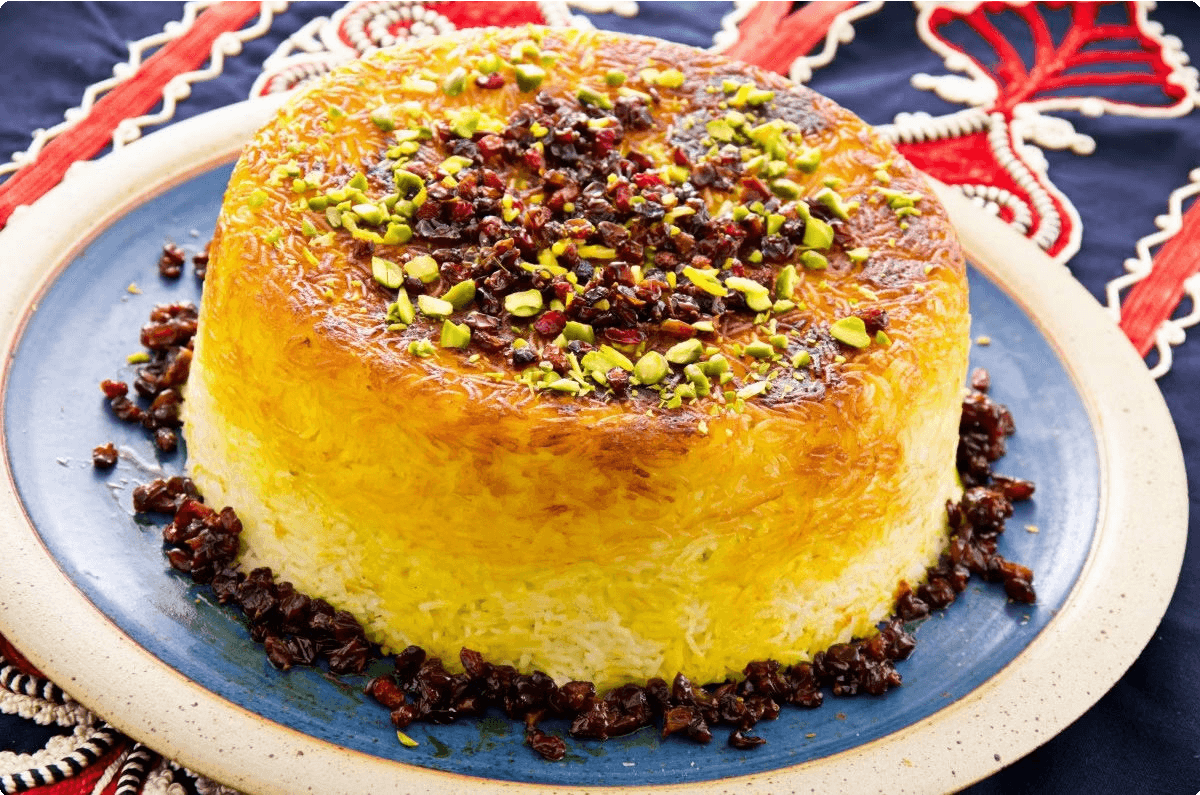
Fesenjan
Fesenjan is a rich and flavorful Persian stew made with chicken or duck, walnuts, pomegranate molasses, and spices. This unique and savory dish offers a perfect harmony of sweet and tangy flavors, making it a favorite in Iranian cuisine.

Ash Reshteh
Ash Reshteh, a hearty and nutritious Persian soup, is made with herbs, legumes, and reshteh (thin noodles). It’s a comforting and wholesome dish often garnished with caramelized onions, kashk (whey), and a sprinkle of dried mint, making it a beloved option for any meal.
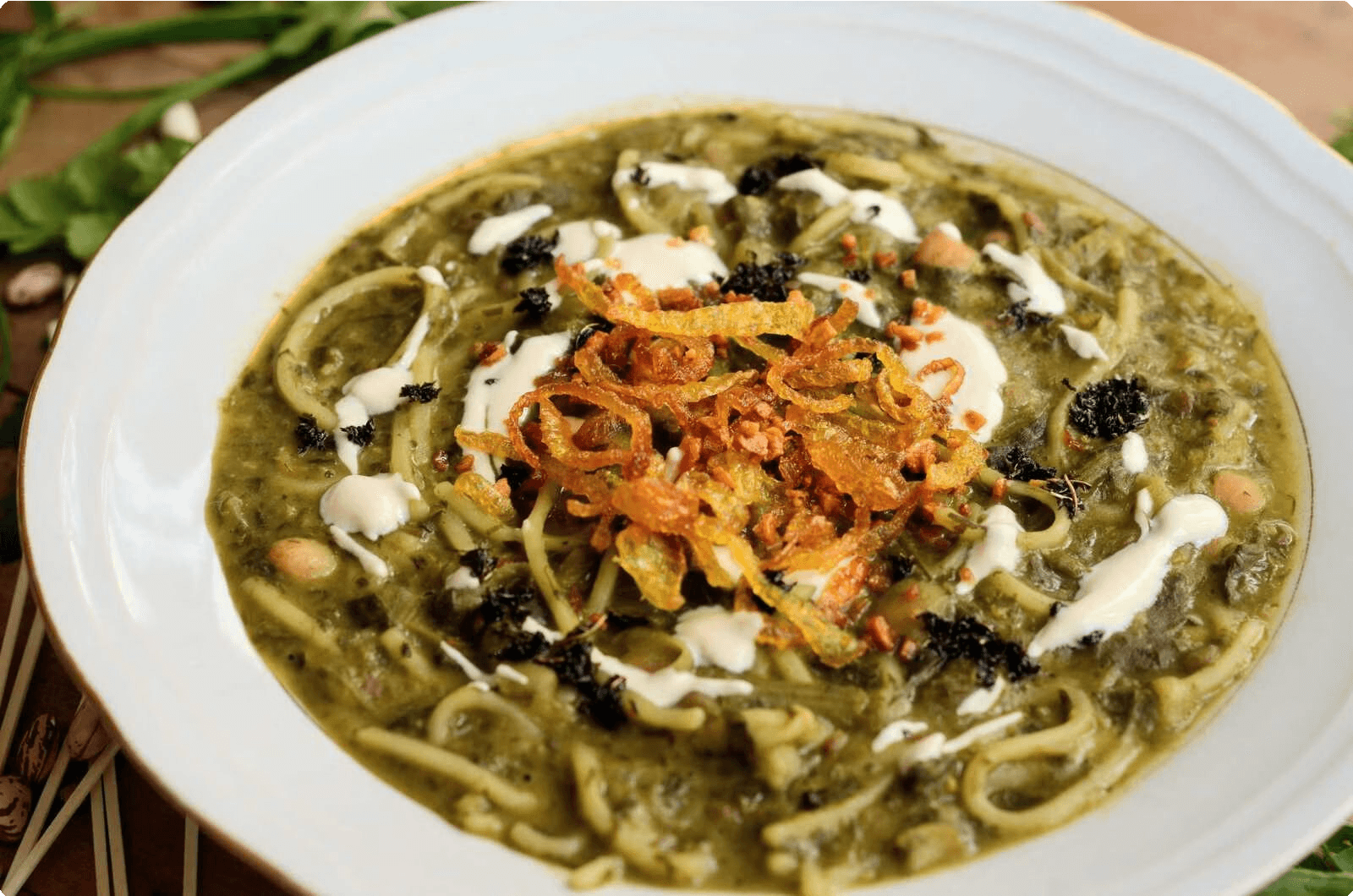
Famous Celebrities from Iran
Shohreh Aghdashloo
Shohreh Aghdashloo is an Iranian-American actress known for her powerful performances in movies and television. She gained international recognition for her role in the film “House of Sand and Fog,” which earned her an Academy Award nomination. Aghdashloo is celebrated for her talent, grace, and impactful portrayal of complex characters.

Asghar Farhadi
Asghar Farhadi is a renowned Iranian film director, screenwriter, and producer. He has received critical acclaim for his thought-provoking and emotionally charged films, including “A Separation,” which won the Academy Award for Best Foreign Language Film. Farhadi’s work is known for its depth, social commentary, and compelling storytelling.

Googoosh
Googoosh is an iconic Iranian singer and actress whose career has spanned several decades. Known as the “Iranian Queen of Pop,” she has captivated audiences with her powerful voice and influential music. Googoosh’s contributions to Iranian music and culture have made her a beloved and respected figure around the world.

Best Cities to Visit in Iran
Tehran
Tehran, the bustling capital of Iran, is a city of contrasts. It offers a blend of modern architecture and ancient sites, such as the Golestan Palace and the iconic Azadi Tower. The city is also known for its vibrant bazaars, like the Grand Bazaar and Tajrish Bazaar, where visitors can immerse themselves in Iranian culture and find unique souvenirs. Don’t miss the serene gardens of Sa’dabad Complex and the historic Niavaran Palace while in Tehran.
Isfahan
Isfahan is often referred to as “Half of the World” due to its stunning Islamic architecture and the majestic Imam Square, a UNESCO World Heritage site. The city’s iconic bridges, such as Si-o-se-pol and Khaju Bridge, are perfect for a leisurely stroll along the Zayandeh River. Visitors can also explore vibrant traditional bazaars and marvel at the intricate tilework at the Jameh Mosque of Isfahan.
Shiraz
Shiraz is the city of poets, literature, wine, and flowers. It is home to the famous Pink Mosque (Nasir al- Mulk Mosque) with its stunning stained glass windows and colorful tiles. The city is also a gateway to the ancient ruins of Persepolis and the grandeur of Pasargadae, where visitors can immerse themselves in the rich history of ancient Persia.
Must-see places in Tehran
Golestan Palace
Golestan Palace is a masterpiece of the Qajar era, known for its stunning architecture, intricate tile work, and beautiful gardens. Visitors can explore the opulent royal complex and learn about Iran’s historical heritage.
Niavaran Palace Complex
This luxurious complex was the main residence of the last Shah of Iran and his family. It showcases a blend of traditional Persian architecture with modern influences, and the beautifully landscaped gardens are a serene escape from the bustling city.
Tehran Grand Bazaar
The bustling bazaar is a vibrant hub of activity, offering an authentic Iranian shopping experience. Visitors can wander through narrow alleyways lined with shops selling traditional crafts, spices, textiles, and more.
Milad Tower
As one of the tallest towers in the world, Milad Tower offers panoramic views of Tehran. The observation decks provide breathtaking vistas of the city, making it a must-visit for photographers and sightseers.
Historical sites in Isfahan
Naghsh-e Jahan Square
A UNESCO World Heritage site, the square is surrounded by stunning examples of Islamic architecture, including the Shah Mosque and Ali Qapu Palace.
Chehel Sotoun
This palace features beautiful frescoes and a reflecting pool, offering a glimpse into the grandeur of the Safavid era.
Vank Cathedral
An architectural masterpiece, this Armenian cathedral showcases intricate artwork and historical significance within Isfahan.
Isfahan is home to some of the most captivating historical sites in Iran. Naghsh-e Jahan Square, also known as Imam Square, is the heart of the city and a testimony to the impressive architecture of the Safavid dynasty. Chehel Sotoun Palace and Vank Cathedral offer further insight into the rich cultural and religious history of Isfahan, making them must-visit destinations for anyone interested in the heritage of Iran.
Beautiful landscapes in Shiraz
Eram Garden
Eram Garden, a UNESCO World Heritage Site, is a historic Persian garden in Shiraz, known for its striking cypress trees, flowing water channels, and vibrant flowerbeds. The meticulous design and serene atmosphere make it a perfect place for leisurely strolls and appreciation of traditional Persian architecture.

Nasir al-Mulk Mosque
Also known as the “Pink Mosque,” Nasir al-Mulk is renowned for its breathtaking stained glass windows that cast an enchanting kaleidoscope of colors onto the Persian carpets when hit by the morning sunlight. This architectural wonder creates a mesmerizing and dreamlike atmosphere, making it a must- visit in Shiraz.

Persepolis
Located near Shiraz, the ancient city of Persepolis boasts grand ceremonial palaces and spectacular bas-reliefs, offering a captivating glimpse into the opulent history of the Achaemenid Empire. The imposing ruins against a backdrop of rugged hills create an awe-inspiring landscape that draws history enthusiasts and travelers from around the world.

Ancient Ruins in Persepolis
Construction of Persepolis
Persepolis, also known as the “City of the Persians,” was built during the Achaemenid Empire in 518 BCE. It served as the ceremonial capital of the empire and was constructed on a massive terrace, showcasing the exceptional architectural and engineering skills of the ancient Persians. The construction of Persepolis was a grand undertaking, involving the collaboration of skilled artisans, architects, and laborers.

Art and Iconography
The ancient ruins of Persepolis are adorned with intricate relief sculptures and carvings depicting elements of Persian mythology, royal processions, and symbolic representations of power and authority. These artistic expressions provide a glimpse into the cultural, religious, and artistic aspects of the Achaemenid civilization, showcasing the richness and grandeur of their visual storytelling.
Historical Importance
Persepolis stood as a testament to the might and grandeur of the Achaemenid Empire and its royal lineage. It served as a hub for diplomatic exchanges, religious ceremonies, and administrative functions, attracting dignitaries and emissaries from across the empire and beyond. The site’s historical importance extends beyond its physical ruins, resonating with narratives of power, politics, and cultural exchange in ancient Persia.
Stunning architecture in Yazd
Yazd, with its unique architecture, is home to some of the most beautiful and mesmerizing buildings in Iran. The city is famous for its windcatchers, traditional Persian-style homes, and ancient mosques adorned with intricate tile work. The mud-brick skyline of Yazd creates a picturesque and enchanting landscape that transports visitors back in time. The Jameh Mosque, a UNESCO World Heritage Site, is a prime example of the city’s architectural wonders, with its towering minarets and stunning mosaics.

The historic city of Yazd is a maze of narrow alleys and old buildings, offering a glimpse into Iran’s rich architectural heritage. The harmonious blend of earthy tones, geometric patterns, and elaborate designs in Yazd’s architecture reflects the city’s deep cultural and historical significance.
Natural Wonders in Kerman
Lut Desert
The Lut Desert, also known as Dasht-e Lut, is one of the hottest and driest places on earth, encompassing an otherworldly landscape of sand dunes, salt flats, and geologically unique formations. It is renowned for its surreal beauty and has been designated a UNESCO World Heritage site. The vast expanse of rippling sands and the dramatic Kaluts (sand castles) make the Lut Desert a mesmerizing natural wonder.
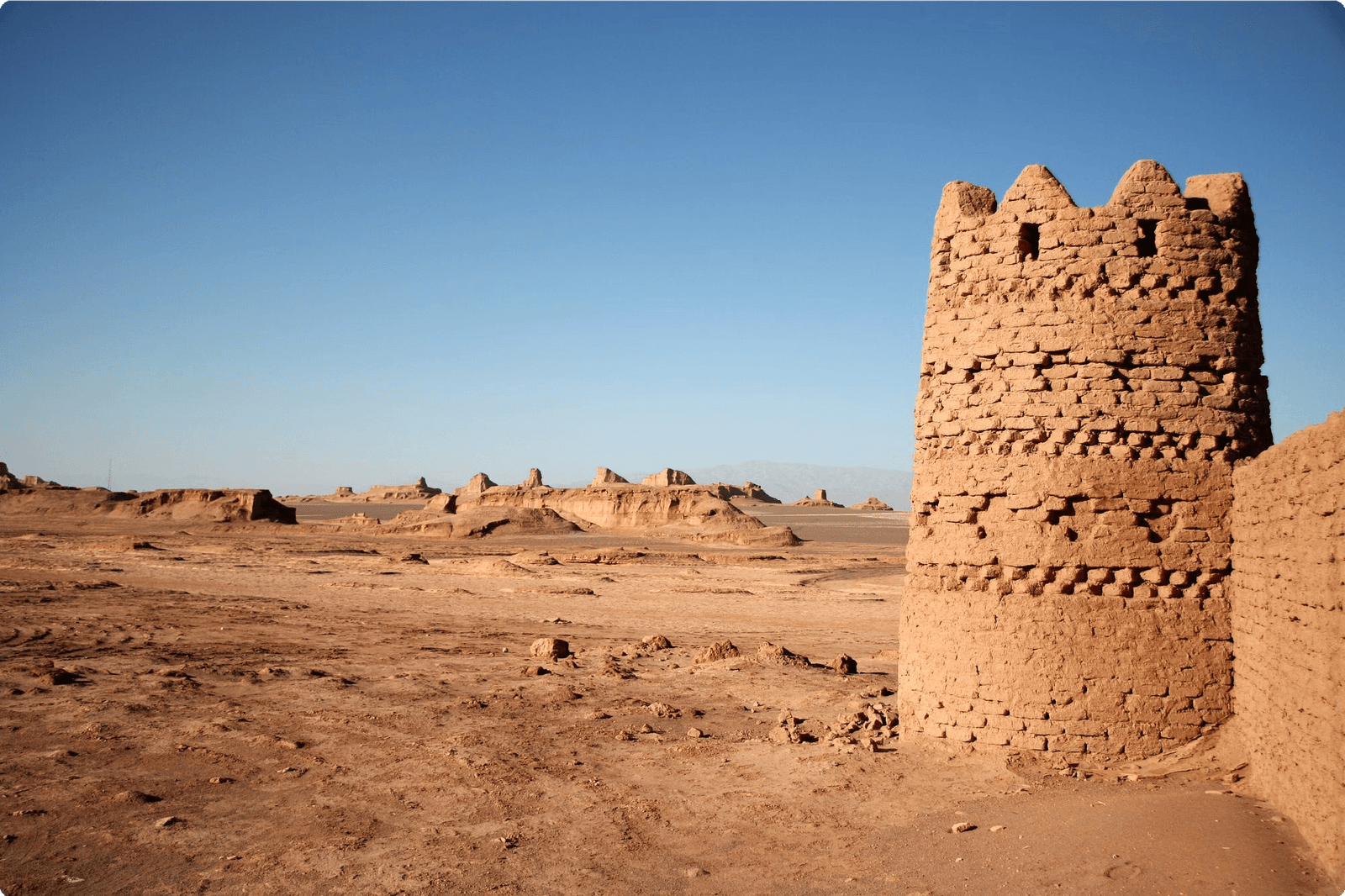
Shazdeh Garden
Shazdeh Garden, located near Mahan in Kerman province, is a breathtaking Persian garden famous for its symmetrical layout, lush greenery, and refreshing water features. This UNESCO-listed garden is a prime example of Iranian garden design and engineering, offering a serene and picturesque setting that captivates visitors with its elegance and tranquility.

Mahan Firouzeh
Mahan Firouzeh is a natural karst cave located in the vicinity of Mahan city. This intriguing cave boasts stunning stalactite and stalagmite formations, creating a subterranean wonderland of natural sculptures. The play of light and shadow within the cave, along with the mystical atmosphere, makes Mahan Firouzeh a captivating destination for nature enthusiasts and spelunking adventurers.
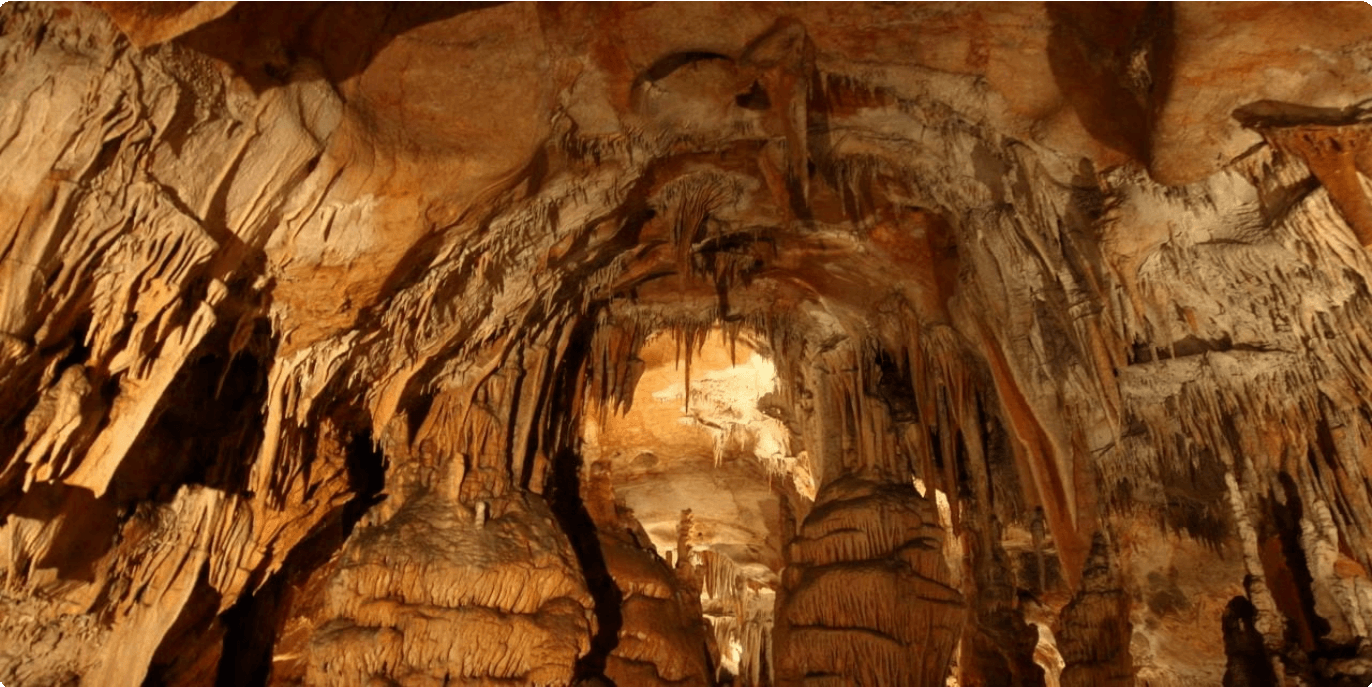
Charming Villages in Gilan
Masouleh
Masouleh is a picturesque village located in the mountains of Gilan. It is known for its unique architecture, where the buildings are built into the mountain slopes, creating a stunning layered effect. The village is surrounded by lush greenery and provides a perfect retreat for nature lovers. Visitors can explore the narrow cobbled streets, enjoy the serene atmosphere, and immerse themselves in the local culture and traditions.
Rasht
Rasht is the largest city in Gilan province and serves as the gateway to the charming rural villages in the region. It is famous for its rich culinary heritage and is known as the culinary capital of Iran. Visitors can explore the bustling bazaars, taste the delicious local cuisines, and experience the warm hospitality of the locals. Rasht offers a perfect blend of urban amenities with a traditional village feel.
Lahijan
Lahijan is a beautiful green city nestled in the Alborz mountain range, known for its tea plantations and scenic landscapes. The city boasts a pleasant climate and is a popular destination for relaxation and rejuvenation. Visitors can stroll through the tea fields, visit the historic mausoleums, and indulge in the famous Lahijan tea, known for its unique flavor and aroma.
Religious sites in Mashhad
The Holy Shrine of Imam Reza: This is the largest mosque in the world by dimension and the second largest by capacity. It is a sacred place for Muslims and an architectural wonder, adorned with stunning domes and minarets.
Goharshad Mosque: Built in the 15th century, this mosque is known for its intricate tile work, Persian architecture, and its historical significance as a place of worship in Mashhad.
Nader Shah Mausoleum: This historical site is the final resting place of one of Iran’s most influential rulers, Nader Shah. The mausoleum is a beautiful structure that showcases the grandeur of Persian architecture.
Cultural experiences in Tabriz
Tabriz, the capital of East Azerbaijan Province, is an ancient city known for its rich cultural heritage. The city is famous for its traditional crafts, including exquisite handmade carpets, copper utensils, and the intricate art of miniature painting. Visitors can immerse themselves in the local culture by exploring the historic bazaars, such as the Grand Bazaar of Tabriz, which is a UNESCO World Heritage Site. The bazaar is a bustling hub of activity and offers a fascinating glimpse into the lively trade and traditional craftsmanship of the region.

The city’s impressive architecture, such as the Blue Mosque and the Arg of Tabriz, reflects its historical significance and provides a captivating backdrop for cultural exploration. Tabriz also hosts various cultural events and festivals throughout the year, showcasing traditional music, dance, and local cuisine. The city’s vibrant cultural scene and warm hospitality make it a must-visit destination for travelers seeking authentic cultural experiences in Iran.
Exploring Tabriz’s cultural heritage offers a unique opportunity to connect with the local community and gain insights into the customs, traditions, and artistic expressions that have shaped the city’s identity over the centuries. Visitors can enjoy engaging with local artisans, participating in workshops, and savoring the flavors of Tabrizi cuisine, renowned for its diverse culinary traditions and aromatic spices.
Unique attractions in Kish Island
Kish Island Underwater Aquarium
Kish Island is home to an incredible underwater aquarium, offering visitors the opportunity to witness the vibrant marine life of the Persian Gulf up close. With a variety of colorful fish, corals, and other aquatic creatures, this attraction provides a captivating experience for nature enthusiasts and families alike.
Greek Ship Beach
The Greek Ship Beach on Kish Island is known for its stunning coastline and the shipwreck of a Hellenic cargo vessel, adding a unique historical element to the picturesque beach experience. Visitors can stroll along the soft sands, take in the breathtaking views, and explore the remnants of the ship’s intriguing past.
Kish Dolphin Park
A visit to Kish Dolphin Park offers an opportunity to observe and interact with bottlenose dolphins in a natural and ethical environment. The park’s conservation efforts and educational programs make it a meaningful and enlightening experience for animal lovers and families seeking a deeper connection with nature.
Harireh Ancient City
Harireh Ancient City, with its scenic ruins and historical artifacts, provides a fascinating glimpse into the island’s rich heritage. The site’s archaeological significance and its intriguing tales of ancient civilizations make it a must-visit for history enthusiasts and those intrigued by the mysteries of the past.
Popular Tourist Destinations in Iran
Persepolis: Explore the ancient ruins of Persepolis, a UNESCO World Heritage site that was once the ceremonial capital of the Achaemenid Empire.
Isfahan: Marvel at the stunning architecture of the Imam Square, visit the beautiful bridges along the Zayandeh Rud River, and explore the intricate designs of the city’s historical mosques.
Shiraz: Discover the beautiful landscapes of Shiraz, including the Eram Garden, the tombs of Hafez and Saadi, and the Pink Mosque with its mesmerizing stained glass windows.
Yazd: Immerse yourself in the stunning architecture of Yazd’s old town, wander through the historic wind towers, and visit the ancient Zoroastrian fire temple.
Tabriz: Experience the rich cultural heritage of Tabriz, from the grand bazaar to the Blue Mosque, and visit the Arg-e Alishah for panoramic views of the city.
Tips for Traveling to Iran
If you’re planning a trip to Iran, there are a few key things to keep in mind to ensure a smooth and enjoyable travel experience. First and foremost, it’s important to note that Iran is a country with a rich history and a diverse cultural heritage. As such, visitors should make an effort to familiarize themselves with the local customs and etiquette to show respect for the traditions and values of the Iranian people.
Additionally, it’s advisable to learn a few basic Persian phrases, as the official language of Iran is Farsi. While many Iranians speak English, making an effort to communicate in their native language can go a long way in forging connections and demonstrating cultural respect.
Iran is known for its stunning architecture, ancient ruins, and picturesque landscapes. Travelers should make sure to visit iconic sites such as Persepolis, the historical city of Isfahan, and the beautiful gardens in Shiraz. Lastly, it’s important to be mindful of the local laws and regulations, particularly with regards to dress code and photography in certain areas.
Remember to check the latest travel advisories and guidance from your government before planning your trip. By being well-prepared and respectful of the local culture, travelers can have a truly enriching experience exploring the wonders of Iran.
Safety precautions in Iran
Respect local customs: It is important to be mindful and respectful of the local customs and traditions in Iran. This includes dressing modestly, especially for women, and being aware of cultural sensitivities.
Stay informed: Keep abreast of the current political and social situation in Iran, and be aware of any travel advisories or restrictions that may be in place.
Communicate effectively: Learning a few basic phrases in Farsi can go a long way in helping to communicate with the locals. This shows respect and can help in various situations.
Be cautious in public spaces: While Iran is generally safe, it’s important to exercise caution in crowded or public areas. Keep an eye on your belongings and be mindful of your surroundings.
Respect religious sites: When visiting mosques, shrines, or other religious sites, dress appropriately and adhere to the rules and practices of the specific site.
Local customs and etiquette in Iran
Iranian culture places a strong emphasis on hospitality and respect. When greeting someone, it is customary to shake hands, but it is important to note that physical contact between unrelated men and women in public is generally avoided. Instead, verbal greetings are exchanged. When visiting someone’s home, it’s common to bring a small gift, such as pastries or flowers, as a sign of appreciation.
It’s important to be mindful of conservative dress codes, especially for women, when in public areas. Modesty in attire is highly valued. Additionally, during meals, wait to be seated and do not begin eating until the host invites you to do so. It’s polite to accept offers of food and drinks, and to express gratitude for the hospitality.
In social settings, Iranians often engage in long conversations and express interest in personal matters. When visiting religious sites, it’s crucial to show respect by wearing appropriate clothing that covers the body, and to behave in a quiet and respectful manner. Overall, understanding and honoring the cultural customs and etiquette in Iran will greatly enhance the travel experience.
Traditional Souvenirs to Buy in Iran
Handwoven Carpets: Carpets are an iconic symbol of Iranian artistry and craftsmanship. Each carpet is a unique masterpiece, often featuring intricate designs and vibrant colors.
Persian Miniatures: These delicate paintings depict historical and mythical scenes, showcasing the remarkable skill and attention to detail of Iranian artists.
Handicrafts: Iran is known for its exquisite handicrafts such as pottery, ceramics, and metalwork. These items make for beautiful and meaningful souvenirs.
Saffron and Persian Spices: Iran is the largest producer of saffron, and its spices are highly prized for their quality and flavor. They make for unique and aromatic souvenirs.
Conclusion
Iran is a country rich in history, culture, and natural beauty, making it a fascinating and diverse destination for travelers. From its ancient ruins to its stunning architecture and vibrant cities, Iran offers a unique blend of experiences for visitors. With a rich tapestry of traditions, delicious cuisine, and warm hospitality, the country provides an unforgettable journey for those seeking to explore its wonders.

As you consider your next travel destination, keep Iran in mind for a truly enriching and eye-opening experience. Whether you’re drawn to its historical sites, beautiful landscapes, or bustling markets, Iran has something to offer every traveler. Plan your trip with an open mind and a sense of adventure, and you’ll be rewarded with memories and experiences that will last a lifetime.